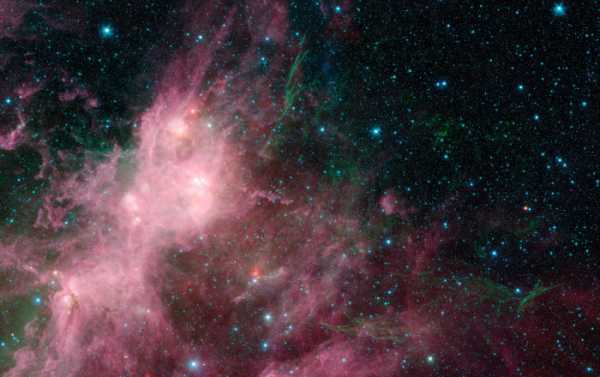
While we cannot conceive of the sky without the numerous stars that light up the heavens, back in the Universe’s infancy, it contained no stars at all. That obscure period holds many secrets which science seeks to gain an insight into, in a bid to learn more about today’s Universe.
An international team of scientists is seeking to detect, measure and study a signal from the obscure, starless “dark age” of the Universe, that has travelled through space for 13 billion years.
Researchers from the University of Washington, the University of Melbourne, Curtin University and Brown University had claimed in a report published in the Astrophysical Journal last year they had achieved an almost 10-fold improvement of radio emission data gathered by the Murchison Widefield Array telescope in Western Australia.
Now, the team is analyzing this data in the search for a signal from the “dark age” of our universe, that could be invaluable for unlocking major questions about the universe today.
‘The Dark Age’
Before the starless period of the Universe, the latter was hot and dense, with electrons and photons trapping each other and rendering it opaque.
These interactions between electrons and photons grew rare when the universe was less than a million years old.
As it expanded, it became increasingly transparent and dark. Throughout this dark period, which lasted hundreds of millions of years, neutral hydrogen dominated the cosmos.
He added that the signal, although never measured, has been established as being out there.
The team of scientists have been using the Murchison Array telescope, made up of 4,096 dipole antennas that pick up low-frequency signals. The electromagnetic signature of neutral hydrogen is just such a signal, which is typically difficult to detect due to electromagnetic “noise” from other sources in the cosmos: activity from stars, galaxies and even man’s technology. All this has drowned out the signal from the neutral hydrogen.
The researchers have come up with a means of filtering this “noise” in their quest to detect the elusive signal, and in 2019 they announced that they had filtered out electromagnetic interference from more than 21 hours of Murchison Array data.
The electromagnetic radio emission signal that the researchers hope to study is one emanated by the neutral hydrogen at a wavelength of 21 centimeters.
However, since the emission occurred, the universe has expanded, stretching the signal out to nearly 2 meters.
According to the researchers, the signal should potentially contain information shedding light on the dark age and the events that brought an end to it.
Advent of Stars
The “dark age” of the Universe came to an end when it was 1 billion years old, as hydrogen atoms began to aggregate and form the first stars.
Their light sparked a new era, the Epoch of Reionization.

Artist’s impression of merging neutron stars
The energy from the stars converted much of the neutral hydrogen into an ionized plasma that dominates interstellar space to this day.
Looking ahead, the team of scientists hope to forge ahead with the filtering interference from about 3,000 hours of additional emission data collected by the radio telescope, which ought to bring them even closer to the signal from the dark age and the secrets it might help to reveal.
Sourse: sputniknews.com
0.00 (0%) 0 votes


































